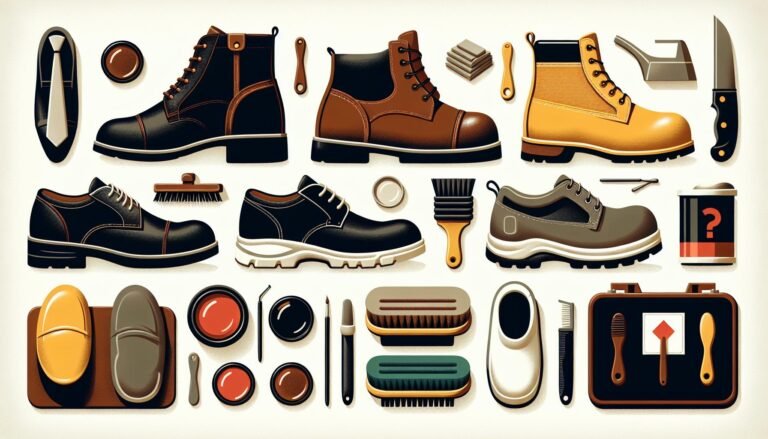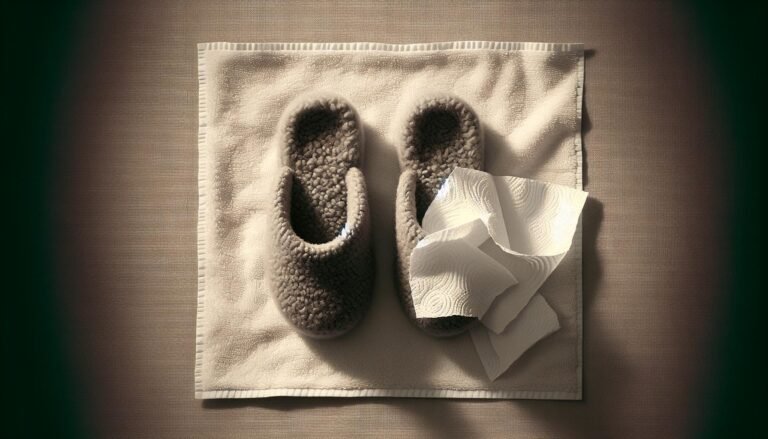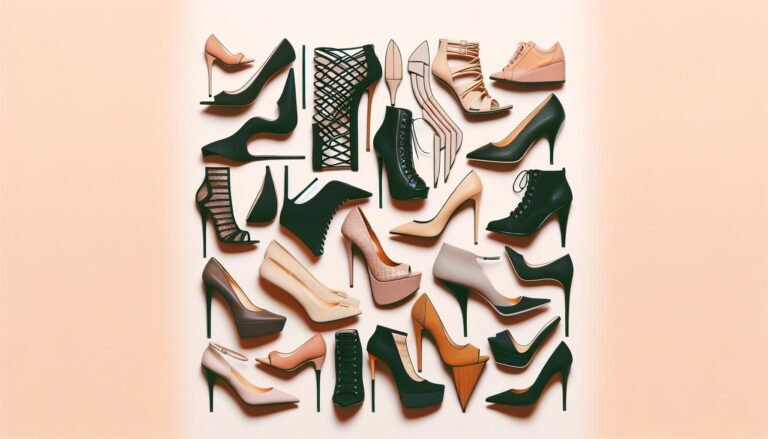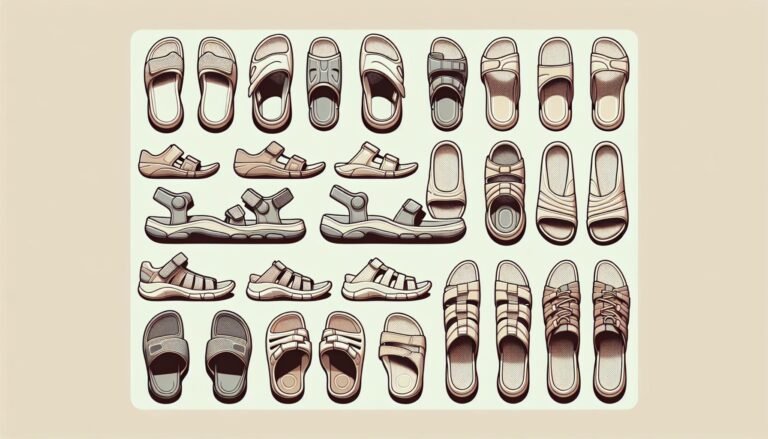Guide: How to Clean Leather Shoes & Shoelaces Correctly
Leather shoes, from sleek boots to stylish sneakers, are a staple in many wardrobes. They’re not just for looks; they’re also incredibly durable, making them a go-to choice for any weather. But as much as we love our leather kicks, keeping them clean can be a bit of a puzzle. It’s not like tossing a pair of canvas shoes in the wash – leather needs a bit more TLC.
That’s where I come in. I’ve learned a thing or two about maintaining leather shoes so they can keep turning heads for years. Whether you’re dealing with light scuffs or deep stains, I’ve got the lowdown on how to clean your leather shoes without causing damage. So, let’s dive into the world of leather care together and keep those shoes looking as good as new.
Key Takeaways
- Preparation is Key: Begin by prepping the area and removing shoelaces for a thorough clean. Inspect shoes for any specific issues like deep scratches or stains which may require special attention.
- Effective Cleaning Techniques: Use a horsehair brush for surface dirt, then apply saddle soap for a deeper clean. Condition the leather afterwards to maintain softness and prevent cracking.
- Enhance and Protect: Apply a pigmented cream polish matching the shoe color for restoration, followed by a high-quality wax polish for a glossy finish and added protection against elements.
- Special Care for Different Types: White leather shoes require specific methods like rubbing alcohol for tough stains and a mixture of water and baking soda for stubborn marks. Faux leather shoes, on the other hand, benefit from gentle cleaning solutions and conditioning with baby or coconut oil. Running shoes should be gently cleaned with a mild detergent solution and never put in the dryer.
- Maintenance is Crucial: Utilize waterproofing techniques to protect both leather shoes and soles from damage. Regular use of a shoe horn can prevent damage to the back of shoes, maintaining their shape and structure.
- Don’t Forget the Shoelaces: Cleaning shoelaces separately with a mixture of liquid dish soap and water ensures that shoes look pristine from top to bottom.
Step by Step Instructions for leather shoe cleaning
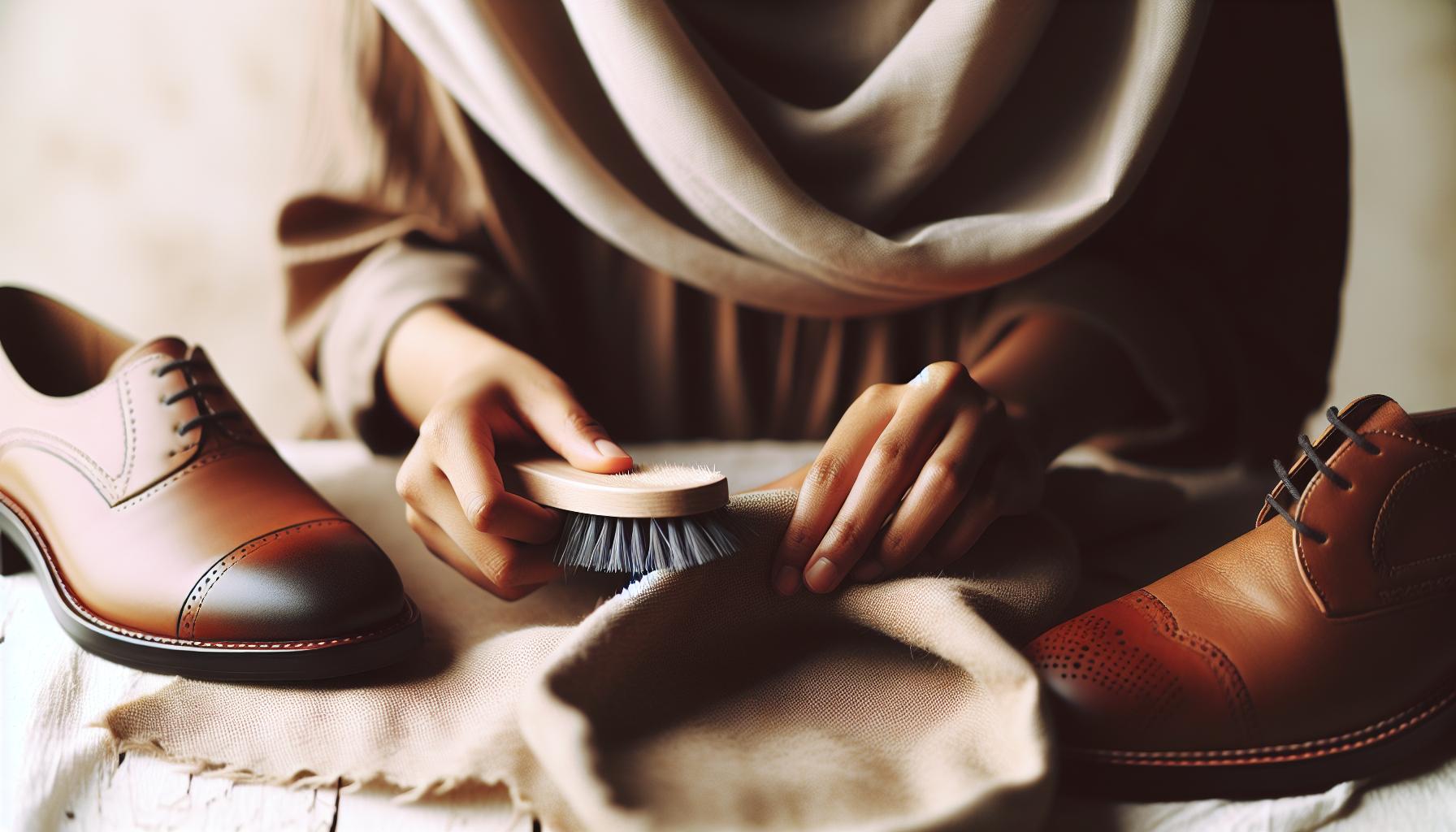
When it comes to taking care of leather shoes, I’ve learned that a meticulous approach can make all the difference. Here, I’ll walk you through the comprehensive steps to ensure your leather shoes remain in top-notch condition.
Step 1: Prepare Surface and Shoes
The first step is always about preparation. I make it a point to clean on a flat, easily wipeable surface and lay down a cloth or newspaper to catch any mess. Next, it’s crucial to remove the shoelaces – they can get in the way, and this provides an opportunity to clean them separately. I also inspect the shoes for any major issues that might need special attention, such as deep scratches or salt stains.
Step 2: Remove Dirt with a Horsehair Brush
Using a soft, horsehair brush is the best way to remove surface dirt and dust without damaging the leather. I gently brush the entire shoe, paying extra attention to crevices where dirt tends to accumulate. It’s important not to skip this step, as dirt left on the shoe can scratch the leather during the cleaning process.
Step 3: Deep Clean with Saddle Soap
For a deeper clean, saddle soap is my go-to choice. It’s formulated specifically for leather, ensuring it cleans without stripping away essential oils. I apply a small amount of saddle soap to a damp cloth and work it into the leather in a circular motion, creating a light lather. After covering the entire shoe, I wipe off the excess with a separate damp cloth and then let the shoes air dry.
Step 4: Condition the Leather
Conditioning is what keeps the leather soft and prevents it from drying and cracking. I usually use a conditioner designed for leather shoes, applying it with a soft cloth and massaging it into the leather. This process restores moisture and keeps the leather supple. I give it some time to soak in before buffing any excess off with another clean cloth.
Step 5: Add a Pigmented Cream Polish
To restore color and add a layer of protection, I apply a pigmented cream polish. I find a shade that matches the leather and apply it sparingly with a soft cloth, using small, circular motions. Cream polishes also help to hide any blemishes or light scratches, making them less noticeable.
Step 6: Finish with a Layer of Wax
For the final step, I use a high-quality wax polish to give the shoes a glossy finish and additional protection. I apply it with a clean cloth, allow it to dry, and then buff it to a shine with a horsehair brush. This not only makes the shoes look great but also helps to repel water and dirt.
Watch a Master Shoe Shiner at Work
I’ve found that observing a master shoe shiner can offer invaluable tips and insights into the art of shoe maintenance. I recommend watching videos or visiting a professional to see their techniques in action. It’s a great way to learn new methods and improve your own shoe care routine.
Shoe care tips to further protect your pair
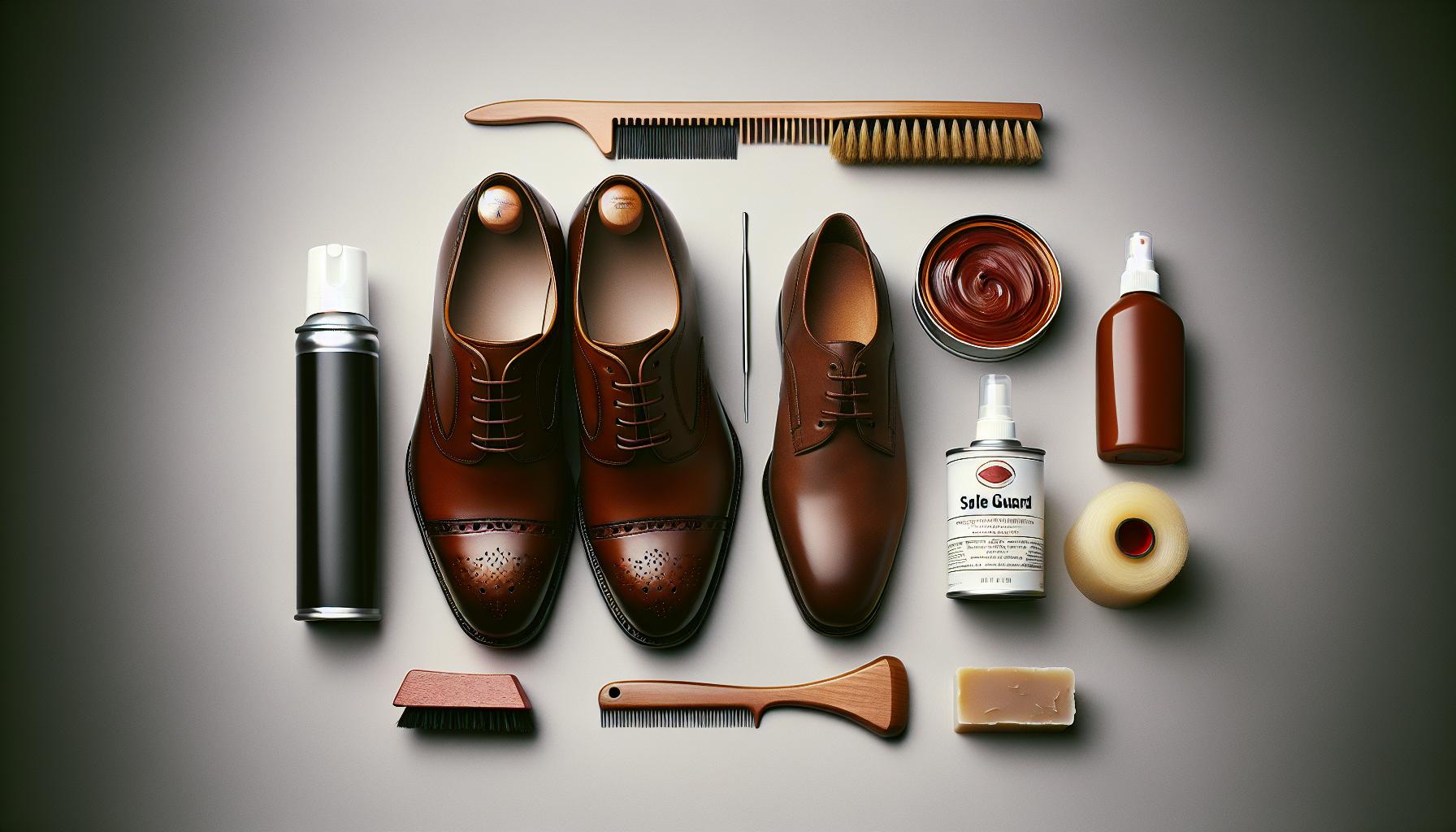
Cleaning your leather shoes isn’t just about removing dirt and grime; it’s also about protecting them for future wear. In this section, I’ll guide you through some essential shoe care tips that will help extend the life of your precious footwear. Let’s dive into waterproofing techniques, protecting the leather soles, and why using a shoe horn is more important than you might think.
How to Waterproof Your Leather Shoes
Water and leather don’t mix well. To keep my leather shoes in top condition, waterproofing is a step I never skip. I start by choosing a high-quality waterproof spray or wax designed specifically for leather. Applying it is simple but requires attention to detail. First, I make sure my shoes are clean and dry. Then, I evenly apply the waterproofing agent, maintaining a distance of about 12 inches if I’m using a spray. It’s important to ensure the product gets evenly distributed across the shoe, including hard-to-reach areas. After applying, I let the shoes sit and dry naturally for a few hours. Waterproofing not only protects against moisture but also against dirt and stains, making future cleanings easier.
How to Protect Leather Soles of Your Shoes
The sole of a shoe often gets overlooked in the cleaning process, but it’s crucial for overall shoe health, especially with leather soled footwear. I’ve found that applying a sole protector can significantly extend the life of the soles. Saphir’s Sole Guard is my go-to product; it’s a vegetable oil-based liquid that effectively waterproofs and protects leather soles. Applying it is straightforward: I add a small amount to a cotton cloth and gently rub it into the sole in circular motions, ensuring it absorbs fully into the leather. This process not only shields the soles from water damage but also from everyday wear and tear, keeping them sturdy and functional for longer.
The Essential Shoe Horn
Many people underestimate the value of a shoe horn, but it’s a tool I never neglect. Using a Shoe Horn helps prevent damage to the back of the shoe, especially the leather heel counter, which can be prone to bending and breaking down over time. Sliding my foot into shoes with a horn ensures that the heel maintains its shape and structure, reducing wear and offering a smoother, more comfortable fit. It’s a simple yet effective tool that supports the longevity of my leather shoes, making it an indispensable part of my shoe care kit.
Keeping your leather shoes clean and well-maintained is the key to ensuring they last you years and continue to look as good as new. Through waterproofing, sole protection, and the proper use of a shoe horn, you’re not just caring for your shoes; you’re investing in their future.
How to clean white leather shoes

When it comes to maintaining the pristine look of white leather shoes, I’ve discovered a few tricks over the years that are both effective and easy to implement. White leather can be particularly challenging to keep clean, but with the right approach, it’s definitely manageable.
Firstly, I always start with a basic cleaning to remove any loose dirt or surface stains. Using a soft cloth or a cotton swab dipped in rubbing alcohol has proven to be a safe and effective method for tackling tougher stains, such as ink or dye transfers from clothing. This step is crucial for maintaining the integrity of the leather.
For those stubborn stains on white leather, I’ve found that a mixture of water and baking soda works wonders. By dipping a wet, soft-bristle brush or even my fingertip into baking soda and gently rubbing the stained area, I’m able to lift most blemishes. Afterward, wiping the area with a clean, wet cloth and letting it air dry ensures that no residue is left behind.
Addressing discoloration is another concern with white leather shoes. Over time, they can lose some of their vibrant white hues. I’ve learned that applying a pigmented leather cream can help restore their original brilliance. It’s important to select a cream that matches the color of the shoes precisely. With a soft cloth, I gently apply a small amount of the cream, focusing on areas with the most wear and tear. After letting it sit for about 5-10 minutes, I use a clean, dry cloth to brush off the excess cream. This buffing process not only works the cream into the leather but also gives the shoes a fresh shine.
Remember, the key to keeping white leather shoes looking their best is regular maintenance and addressing stains or discoloration swiftly. By incorporating these steps into your shoe care routine, you’ll ensure that your white leather shoes remain as striking as the day you bought them.
How to clean faux leather shoes

When I first ventured into the world of faux leather shoes, I quickly realized that while they offer an affordable and ethical alternative to real leather, they demand their own unique care to keep them looking sharp. Let’s dive into the best ways I’ve found to maintain and clean these stylish staples.
Cleaning faux leather shoes is somewhat similar to their genuine counterparts but with a few key differences. I always start by removing any loose dirt or debris. A soft-bristle brush or toothbrush works wonders for this initial step, ensuring the surface is free from particles that could scratch during the cleaning process.
Next, I create a gentle cleaning solution by mixing a few drops of liquid dish soap in a bowl of water. Dipping the same soft-bristle brush into this mixture, I gently scrub the shoe uppers in a circular motion. It’s important not to soak the material — a damp brush is all you need. Following this, I wipe down the shoes with a clean, wet paper towel to remove any soap residue.
The key to drying faux leather shoes is avoidance of direct sunlight and heat sources, as these can cause the material to fade or shrink. I prefer letting them air dry indoors, which preserves their shape and finish.
To tackle any unpleasant odors, baking soda is my go-to solution. I sprinkle a modest amount inside the shoes and let it sit overnight. The next day, I just brush out the powder, and they’re fresh once again.
What really sets faux leather care apart is the conditioning. Unlike real leather that often requires specialty products, for faux leather, a dab of unscented baby oil or coconut oil is perfect for keeping the material supple without risking damage to its structure. I apply a small amount after cleaning, ensuring the shoes don’t dry out and crack over time.
By incorporating these steps into my routine, my faux leather shoes have maintained their look and durability, proving that with the right care, they can be a lasting addition to anyone’s wardrobe.
How to clean running shoes

After diving deep into the intricacies of leather shoe care, it’s time I shift gears towards a more common, yet equally vital footwear type – running shoes. Unlike their leather counterparts, running shoes can handle a bit more rough-and-tumble cleaning, but they still demand a certain level of finesse to avoid damage.
First off, remove excess dirt by tapping the soles together outside. I find this step crucial as it prevents any loose dirt from becoming a stubborn stain later on. Then, using a soft-bristle brush, I gently scrub off the remaining dirt from the surface. It’s amazing how much of a difference this simple step makes.
Next, I create a cleaning mixture by diluting mild detergent in water – ensuring it’s gentle enough to not harm the shoe’s fabric. I dip a soft cloth into the solution and meticulously clean the exterior. Believe me, less is more when it comes to the amount of water and detergent. For the interior, I sprinkle a generous amount of baking soda and leave it overnight to tackle any odorous demons lurking within.
Rinse the shoes with a damp cloth to remove any soap residue, then stuff them with paper towels to absorb moisture and maintain their shape while they air dry. Never put running shoes in the dryer; the high heat can warp them or decrease their lifespan.
To protect my running shoes further, I apply a water-repellant spray once they’re completely dry. This step is a game-changer, especially if you’re often running in moist or unpredictable weather conditions.
Following these simple yet effective steps not only keeps my running shoes in top-notch condition but also prolongs their life, ensuring that I’m always ready to hit the ground running, no matter where my feet take me.
How to clean shoelaces
When I tackle the task of cleaning my leather shoes, I pay special attention to the shoelaces, which often collect more dirt and grime than the shoes themselves. Removing and cleaning shoelaces is a crucial step that shouldn’t be overlooked. Here’s how I do it:
First, I always remove the laces from the shoes to ensure I can clean them thoroughly, reaching every part without the shoe itself getting in the way. Once removed, I inspect them for any knots or tangles and gently untangle them. This ensures the entire length of the lace gets cleaned evenly.
For the cleaning solution, I mix a few drops of liquid dish soap into a cup of warm water. I’ve found that this simple mixture works wonders on most dirt and stains that laces pick up. I submerge the laces in the solution, letting them soak for a bit. This soaking time helps to loosen any stubborn dirt and makes the cleaning process easier.
Next, I use a soft-bristled brush or even an old toothbrush to gently scrub the laces. This step helps to remove tough spots or embedded dirt. If the laces are exceptionally dirty, I might add a sprinkle of baking soda to the mix for its gentle abrasive properties and its ability to tackle odors without harming the fabric.
After thoroughly scrubbing, I rinse the laces under cold or lukewarm running water until all soap residue is washed away. It’s essential to rinse them well because any leftover soap can attract more dirt over time.
Finally, I lay the laces flat on a clean towel or hang them up to air dry. Avoiding direct sunlight is key to preventing any possible fading, especially if the laces are colored. Once they’re completely dry, I re-lace my shoes, taking care to do it neatly for the best appearance.
By taking the time to clean my shoelaces properly, I ensure that my leather shoes look their best from top to bottom. Incorporating this simple yet effective cleaning routine helps maintain the overall aesthetic and longevity of the shoes, contributing to a polished and well-cared-for appearance.
Frequently Asked Questions
Is it necessary to remove shoelaces when cleaning leather shoes?
Yes, removing shoelaces is crucial for cleaning leather shoes effectively. This allows for thorough cleaning of both the shoelaces and the shoes, ensuring no dirt is trapped under the laces.
Can dish soap and warm water be used to clean shoelaces?
Absolutely, a mixture of liquid dish soap and warm water is ideal for cleaning shoelaces. It helps in breaking down the dirt and grime without damaging the fabric of the laces.
What is the best way to scrub shoelaces without causing damage?
The best way to scrub shoelaces is by using a soft-bristled brush or toothbrush. This ensures gentle yet effective removal of any tough spots or built-up grime.
How can baking soda help in cleaning shoelaces?
Baking soda is great for tackling tough spots and odors on shoelaces. When mixed with water, it forms a paste that can break down stains and neutralize bad odors, leaving the laces fresh.
What are the proper drying methods for shoelaces to prevent fading?
To prevent fading, it’s best to air dry shoelaces away from direct sunlight. Laying them flat on a clean towel in a well-ventilated area will ensure even drying without any discoloration.



